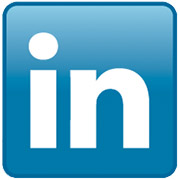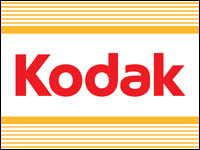
RIM announced on Friday that it would record a pre-tax provision in the third quarter of fiscal 2012 of about US$485 million, or $360 million after tax. The provision is related to the high level of its BlackBerry PlayBook tablet inventory. The charge is expected to be mainly non-cash.
Increased promotional activity is necessary to drive sell-through to end customers, the company said, due to recent shifts in the dynamics of the tablet market and the delay in the release of the PlayBook OS 2.0 software, which is set to arrive in February of 2012. Existing PlayBook customers will get the OS for free once it is released.
RIM’s provision is set to represent the current market and allow it to expand the already aggressive level of promotional activity geared toward further adoption of the BlackBerry PlayBook around the world. The positive response to the promotions that are under way in select markets will accelerate the adoption of its QNX-based platform by consumers and enterprises, the company said.
RIM is also using these promotions to drive the development of an ecosystem in advance of the next generation of BlackBerry smartphones.RIM reported it sold about 150,000 PlayBooks into channels in the third quarter, with sell-through to end customers higher.
Too Little Too Late
If it hadn’t been for the PlayBook difficulties, RIM might be in fighting trim. The company still has deep roots in the enterprise smartphone market.
“The PlayBook debacle will offset the sequential smartphone traction the company’s attained with new portfolio during the quarter,” Neil Shah, analyst for wireless devices strategies at Strategy Analytics, told the E-Commerce Times. “The revenue and opportunity loss incurred will directly and negatively affect RIM’s stock performance in the near term.”
Indeed, the company’s stock price fell from nearly $19 on Thursday to $17 on Friday. In February, the stock was trading for $70.
RIM has been late in bringing touch and other platform enhancements to its smartphone portfolio, which has put the brakes on its growth, Shah noted.
“That especially hurt its marketshare, brandshare, mindshare and market value,” he said. “Furthermore, rushing in and offering a half-baked product in terms of the BlackBerry PlayBook — with the unproven QNX operating system and with the absence of serious apps and services — was a big misstep, which has jeopardized RIM’s position in the tablet space.”
RIM still has a chance to recover in the smartphone space if its upcoming BBX portfolio can make waves among consumers, in Shah’s view, and if the fresh BlackBerry smartphones continue to hold the fort in the enterprise arena.
“‘If’ BBX is a hit and can connect well with consumers, then RIM can think about extending the product line beyond smartphones and re-enter the tablet space,” he said.
Still Time to Catch Up
The heavy lifting of launching the PlayBook tablet in the face of the successful iPad cut deep into RIM’s expenditures. That investment cut into profits.
“The need to recognize the costs of driving the sell-through of the PlayBooks in inventory was inevitable, and the company understands how competitive the tablet market landscape has become,” Martin Bradley, associate director at Strategy Analytics, told the E-Commerce Times.
That investment may pay off yet, though, since the tablet market is only 18 months old. RIM has time to catch up.
“However, they are also right that the tablet market is still in its infancy, and there are many reasons why they should continue to create a differentiated proposition in this market,” said Bradley.
Software Has Legs
One of the big gains RIM has made in recent years is developing strong software. Even if RIM is stumbling this year, the company’s technology can potentially provide a strong future.
“In addition to tablets becoming one of the foundation stones of future wireless and media communications, some of the software technology used in the PlayBook should provide RIM a good springboard to a future generation of high-performance smartphones,” said Bradley.
The announcement has not really changed the underlying trend, he said. “The timeliness of new software releases is more closely related to future prospects for the company than tactical decisions on how to move through the first wave of tablet product.”
RIM has already developed a new coherent software strategy for both future smartphones and tablets, Bradley observed.
“The strength of its propositions for enterprise customers is also being refined to provide more elegant services than many current competitors. Much now rests on the execution,” he said, “and communicating that vision to the market.”





















































Social Media
See all Social Media